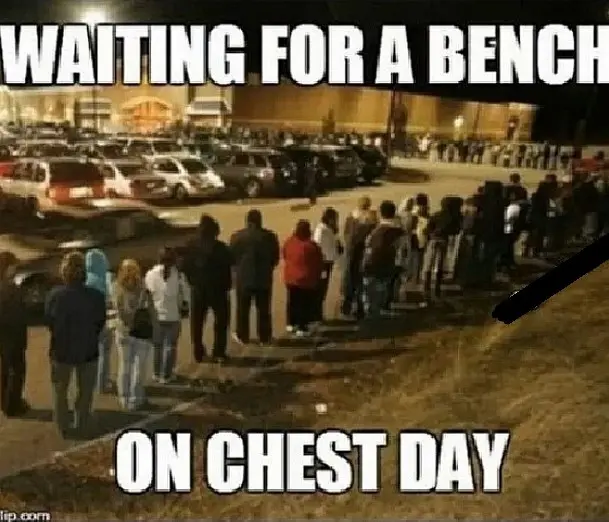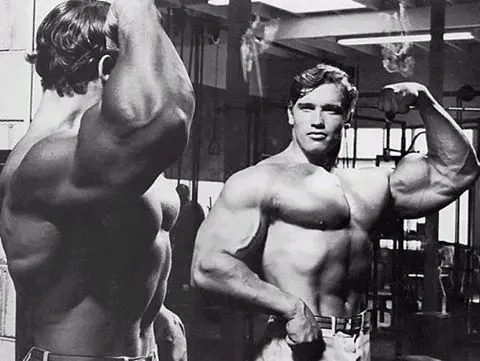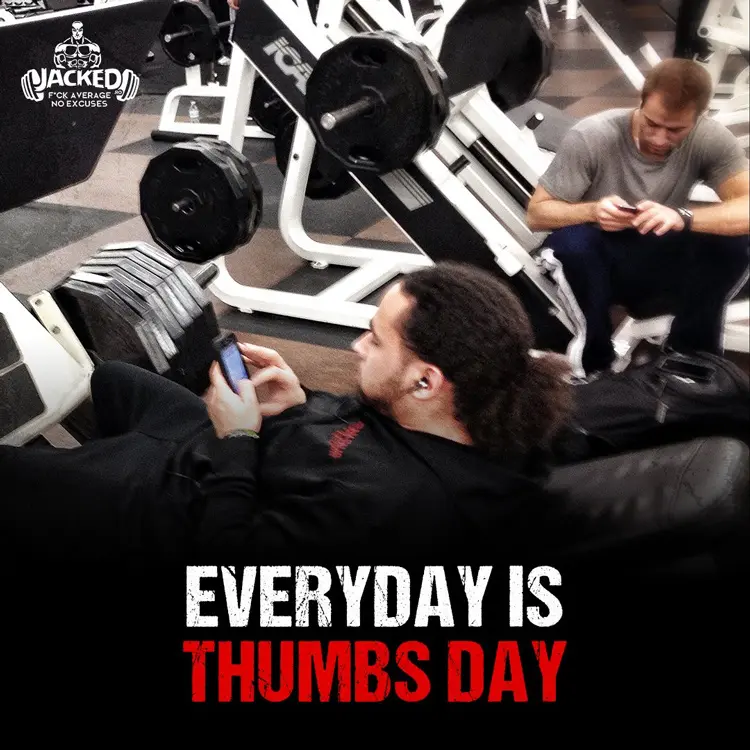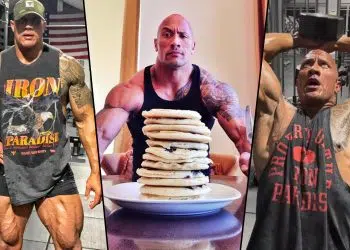Over the last 35 years (yes – I’m old!), I’ve been a gym instructor, personal trainer, gym manager, and gym owner. I was also a lecturer for an internationally acclaimed personal training qualifications company.
I’m not just an academic guy either; I’ve also competed in powerlifting and trained my wife to compete and win in bodybuilding too. It’s safe to say I know my barbells from my dumbbells!
During this time, I’ve seen hundreds if not thousands of people working out, some of whom have achieved greatness (and I’m talking Olympic gold medals here!), while others have accomplished nothing at all.
What’s the difference between the successful lifter and the ones that went nowhere?
In the majority of cases, those that made the least amount of progress made the most mistakes.
Don’t get me wrong; we all make workout mistakes from time to time, but every time you stray from the path of productive training, you waste effort and energy that could otherwise be used to drive you forward toward your fitness goals.
Level Up Your Fitness: Join our 💪 strong community in Fitness Volt Newsletter. Get daily inspiration, expert-backed workouts, nutrition tips, the latest in strength sports, and the support you need to reach your goals. Subscribe for free!
I don’t know about you, but I HATE wasting time and energy. To me, they are like money, and I hate losing that too!
So, to help you get the best possible results from your training, here are the most common strength training mistakes I’ve seen in my 35 years working in the fitness industry. If you avoid these slip-ups, you will take the brakes off your progress and get a better return on your investment of time and sweat.
1. Sticking with your workout beyond its use-by date
Your body is amazingly adaptable. When exposed to a stress, such as a new workout, it responds by getting bigger and stronger. This is a sort of survival mechanism so that, when you repeat that workout, it’s just a little bit easier. That’s why we strongly recommend you increase your weights or do an extra rep or two from one week to the next.
However, a whole lot of exercisers are seemingly married to their current workout regimen and are very reluctant to change it. These folks are easy to spot; they’re the ones doing the same exercises with the same weights on the same day and probably at the same time each and every week.
You can spot them another way too – they’re the people who make absolutely no progress, despite their regular workouts.
If you want to make progress, you MUST change your workout program from time to time. Use new exercises, different training methods, an alternative split – mix things up!
How often should you change your workout? That’s hard to say. Some people adapt faster than others. But, every four to eight weeks is a good guideline for most. If you are still making progress, stick with your current workout until you notice things are starting to stall. But, if you are stuck in a rut and aren’t getting the results you want, you are definitely due for a new program.
2. Being a mirror guy
A lot of gym-goers spend too much time training the muscles they can see in the mirror. Every workout is all about those pecs, biceps, abs, and quads. There is no denying that these muscle groups are important and add a lot to your physique, but they are only half the story when it comes to building an impressive, strong, and healthy body.
The muscles you can’t see in the mirror are every bit as important as the ones you can. In fact, I’d argue they are MORE important because these muscles are crucial for posture and performance.
The muscles on the back of your body drive you forward when you walk, run, or jump, and also hold you up against the pull of gravity. If overshadowed by the muscles on the front of your body, an imbalance will develop that could lead to injury.
Also, if you really want to look like you lift, you should be strong from the back as well as the front. A well-developed back will really set you apart from other exercisers who only train their mirror muscles.
Because of this, whenever I write a program for myself or a client, I always prescribe an equal amount of pulling and pushing exercises, for the upper AND the lower body. This helps prevent imbalances before they get a chance to take hold.
If you’ve been a mirror guy until now, you may need to do more pulling than pushing exercises to get things back on track. However, your efforts will be rewarded, and you’ll end up looking and performing far better.
3. Using the kitchen sink approach to exercise selection
I don’t know why, but a lot of lifters seem to want to do every exercise possible for their chosen muscle group. Just yesterday, I watched a guy do:
- Barbell bench press (incline and flat)
- Dumbbell bench press (incline and flat)
- Chest press machine
- Push-ups
- Dumbbell flyes
- Cable flyes
- Pec deck machine
The thing is, by about the third exercise, he was so tired that he could only lift light weights, and his technique was truly horrible! All he was doing was hammering a muscle that was already exhausted. It was overkill.
Not only that, if you look at the exercises, there are also really only two different movement patterns – a pressing movement and an isolation movement. It’s just the same thing being done over and over again using a different piece of exercise equipment.
I call this the kitchen sink approach to exercise selection – just toss everything in!
If you use every conceivable exercise for each muscle group in each workout, you have no real way to vary future workouts. You’ve used them all already.
A far better and more productive approach would be to use fewer exercises and then change those exercises every 4-8 weeks to maintain your progress.
When I was just starting out in the fitness industry, I read a quote by a then-famous bodybuilder who said, “you can train hard, or you can train long, but you can’t do both,” and that’s something I genuinely believe.
The more exercises you have in your workout, the lower your intensity will be. Most lifters will get much better results if they put more energy into fewer exercises.
This will pull the trigger on the mechanisms responsible for muscle hypertrophy and strength without causing so much fatigue that it delays recovery.
Rather than see how many exercises you can do, see how few you need to get the results you want.
4. Ego lifting
Ego lifting is all too common in gyms all around the world. An ego lift is when you put too much weight on the bar and then use horrible technique to move it. You might even end up half-repping it because it’s simply too heavy for you to use full-range reps.
No-one likes an ego lifter. Really strong people think they’re a joke, and the few people that ARE impressed by heavy weights lifted badly know so little about training that their approval is worthless.
Level Up Your Fitness: Join our 💪 strong community in Fitness Volt Newsletter. Get daily inspiration, expert-backed workouts, nutrition tips, the latest in strength sports, and the support you need to reach your goals. Subscribe for free!
Ego lifting does two things – it increases your risk of injury, and it reduces the effectiveness of your workout. There are two ways to perform any exercise – the right way and the wrong way. The right way is safe and beneficial. The wrong way is dangerous and ineffective. Using more weight than you can properly handle means you won’t able to do your chosen exercise properly.
Unless you are a powerlifter or weightlifter, the amount of weight you lift really isn’t that important anyway. And even if you are, there is a time and a place for ugly-assed reps – on the lifting platform when you are trying to eke out a few extra kilos and go for the win. The rest of the time, ego has no real place in strength training, and letting it rule your workouts is a good way to get injured.
5. Too much socializing and not enough training
When I started lifting, mobile phones were the stuff of science fiction. A phone you could put in your pocket? No way!
Nowadays, phones are commonplace, and gyms are less productive places because of it.
All too often I see guys pumping out a set of their chosen exercise and then spending the next five minutes updating their social media status (#killing it, #getting strong, #gymboss, etc.), sending SMS, making calls, or otherwise not doing what they should to build muscle and get strong.
I’ve even seen people training together doing this when, really, they should be spotting and encouraging one another, not playing Candy Crush or whatever.
Here’s one of the secrets to productive training – mindset. Your ability to focus on the job in hand will have a HUGE impact on your progress. Look at old videos of bodybuilding legends like Arnold Schwarzenegger, Tom Platz, Dorian Yates, Lee Haney, or Ronnie Coleman. These guys didn’t switch off between sets. Instead, they used this downtime to get pumped for the next set. Their rest periods were more focused and intense than most people’s workouts!
So, do yourself a favor and leave your phone in your gym bag. Use your downtime between sets to get psyched for your next effort. Use this time to think about the exercise you are doing, connect your mind to the muscle you are training, and build the aggression that will help you pump out more reps or lift more weight.
And, in my opinion, if you have the energy to mess with your phone between sets, you really aren’t training hard enough, and it’s no wonder you aren’t making the progress you want.
6. Being a pro in the gym, but an amateur out of it
If you are following a good workout plan, training hard and consistently, and still aren’t making progress, you are probably making this serious and common mistake.
Even if you are an ardent exerciser, you probably only spend 4-8 hours per week training – out of a possible 168. During that time, it’s all too easy to undo any of the benefits of your workouts, bringing your progress to a grinding halt.
Common out of the gym mistakes that a lot of lifters make include:
- Not getting 7-9 hours sleep every single night
- Not eating enough
- Eating too much of the wrong thing
- Not drinking enough water
- Drinking too much alcohol
- Smoking and recreational drug use
- Partying too hard
- Undermining recovery by wasting energy on other non-gym related activities
- Being too sedentary between workouts
Training is only the tip of the iceberg for building muscle and strength. All of these other factors are crucial too. There is another old fitness saying I like: “You can’t out-train a bad diet.” I’d like to expand this by adding that you can’t out-train an unhealthy lifestyle either.
Getting in shape will be easier with a holistic approach that includes workouts and other factors like sleep and nutrition. To get the results you want, you need to be a pro in the gym and a pro outside too.
7. Majoring in the minors
When I first learned about program design and exercise selection, my lecturers introduced me to the “bucket of rocks” concept.
Imagine your workout is an empty bucket. The first thing you should put into your bucket is big rocks. In training terms, these are your hard-and-heavy compound exercises. Why? Because they provide the most bang for your buck and are literally the foundation of your workout. In theory, you could just do these exercises and get good results.
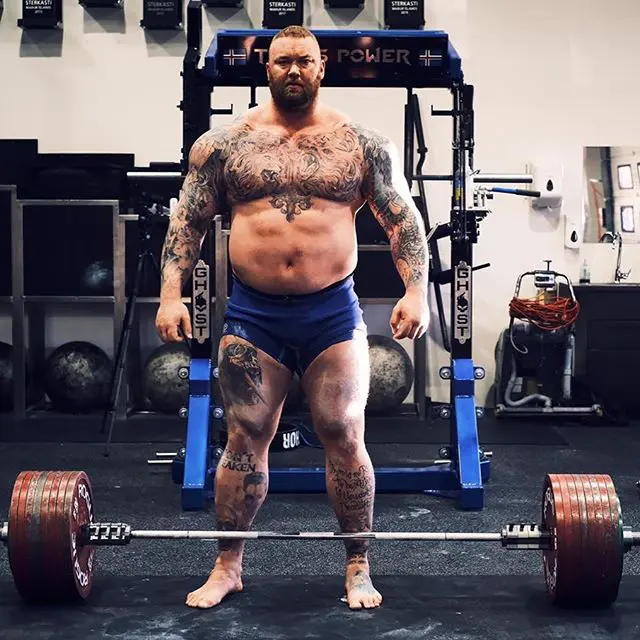
But your bucket is not full yet, so you can add some smaller stones to fill the gaps. These are less essential compound exercises that you choose to fix any muscular imbalances, or that will boost the performance of your “big rock” exercises. These second-tier exercises are still important, but they’re not as crucial as the main exercises in your program.
Lastly, you can add some little pebbles. These exercises are nice to do, but really don’t have that big an impact on your progress. These are invariably isolation exercises for muscles you have already trained with your compound exercises.
Your bucket is now full.
If you put your workouts together in this way, your training should be productive, and you’ll be able to put most of your energy into what really matters – the productive big rock exercises.
Unfortunately, a lot of exercisers fill their buckets with pebbles and small rocks first, leaving no room for the most productive exercises. They major in the minors and, subsequently, their workouts produce poor results.
If you want to build muscle and get strong, your primary focus should be on compound exercises like:
- Squats
- Deadlifts
- Bench presses
- Overhead presses
- Pull-downs and pull-ups
- Rows
These are your big rock exercises. Your workouts should be built on these foundations.
But, if your workout contains more isolation and less important compound exercises, your progress is bound to suffer. If you’ve got more sets of leg extensions and leg curls than squats and deadlifts in your workout, is it any wonder you’ve got skinny, weak legs?
Look at your workouts and make sure you aren’t majoring in the minors. That doesn’t mean you CAN’T include smaller, less important exercises in your workouts. It’s just that they should be further down your program sheet, so you can prioritize the most productive training exercises.
Training mistakes – the wrap-up
Making mistakes is part of the human condition. We all do things wrong from time to time. The trick is identifying those mistakes and then not repeating them. If you recognize any of these slip-ups in your own workouts, take action to remedy the problem. Once you’ve made your changes, you should start to get better results from your workouts.
Or, you could just ignore this advice and stay in the rut you’ve dug for yourself – it’s up to you!
One of my favorite sayings that can be applied to training is “when the horse is dead, it doesn’t matter how big a stick you hit it with.” To me, this somewhat morbid expression means that, if you are doing something wrong, doing more of the same won’t change the outcome. If you are making workout mistakes, continuing to do so won’t produce better results. Instead, you’ll stay right where you are or even go backward.
In my mind, that’s a tragedy!
Stop wasting your valuable time and energy and start getting the results you want. Common strength-training mistakes? Just say, NO!

